What to wear when running in the rain: our top tips
Our expert tips on what to wear when running in the rain to protect you from slipping, getting absolutely soaked and chafing, even in a deluge
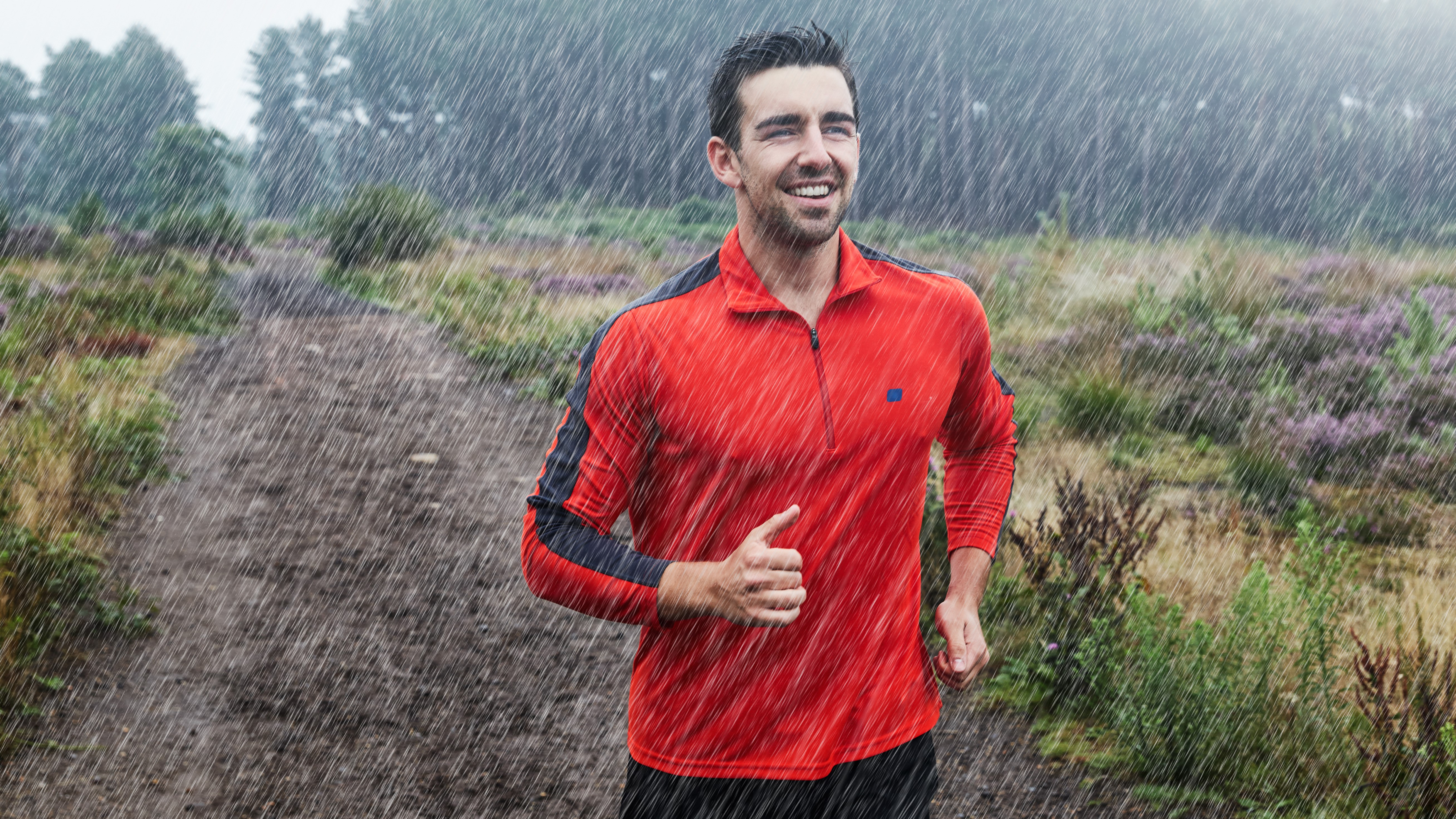
Running in the rain isn't everyone's cup of tea. At some point, we've all put off a run because of the weather. However, consistency is key when it comes to increasing your performance. Sure, it can be difficult to drag yourself out there when it's raining cats and dogs. However, we reckon, with the right clothing and a few handy tips, running in rain can actually be great fun.
So, in this feature, we offer our expert tips for what to wear when running in the rain to protect you from slipping, waterlogging and chafing, even in a deluge. We also finish off with a few other hard-won tips and answer whether or not you can get sick if you run in the rain.
What to wear when running in the rain
- A quality pair of waterproof trail running shoes
- Waterproof running socks
- A pair of running leggings
- A breathable synthetic running top
- A lightweight waterproof running jacket with hood
- A peaked cap (if running without a hood)
Meet the experts

Julia is an avid runner who enjoys having the trails of the Southern Highlands on her doorstep. She gets out come rain or shine and knows how to look after herself in a deluge.

Britain isn't known for being particularly dry and its mountains are even wetter. Therefore, avid mountain runner Alex has plenty of experience of taking on long, committing runs in wet conditions. Here, he wrings out his hard won knowledge, letting it drip down into the advice below.
Running shoes
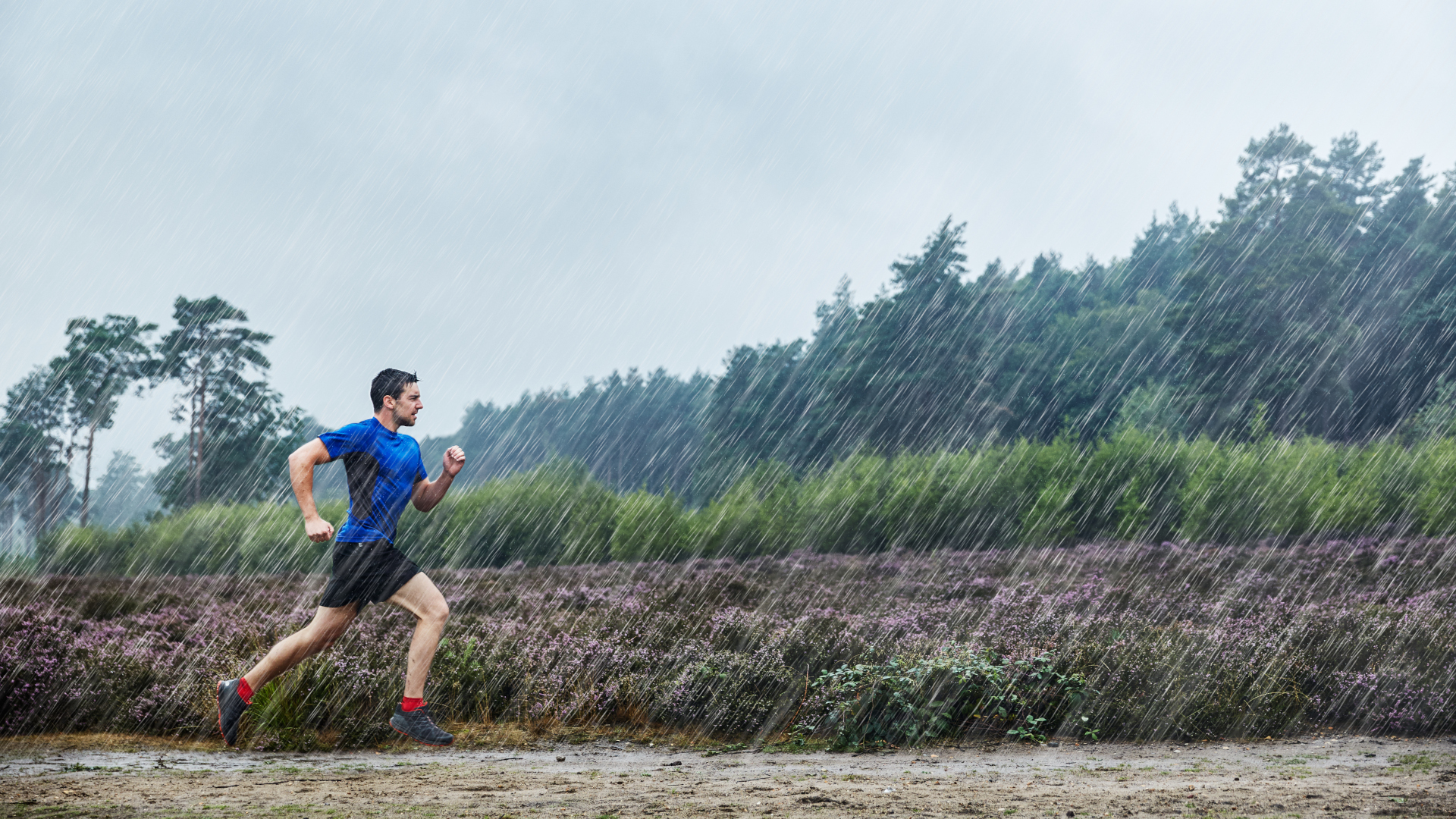
Yes, of course you want to run wearing running shoes, but in wet weather, not just any old pair will do. Rocky trails and even some road surfaces can get slick when wet, so you’ll want a pair of the best trail running shoes or hybrids with good tread to avoid slipping.
No matter what type of running you’re doing, wear a pair with uppers that use a breathable, waterproof fabric such Gore-Tex. This will keep rain from getting in but also allow sweat to get out, for which your feet will thank you. However, don't expect waterproof trail shoes to be quite as breathable as their non-waterproof counterparts.
Wear shoes with mesh panels to enhance their breathability, and make sure you know how to tie a heel lock to keep your heel from moving inside your shoes as you run which can cause rubbing.
Waterproof running socks
We know we just said to wear waterproof shoes, so why wear waterproof running socks too? Well, as we explain in our article on waterproof running socks, even if your shoes are waterproof, when you’re splashing through the puddles and the ankles of your socks get soaked, it quickly works its way down inside your shoes. Though wet feet on a short run aren't the end of the world, for a longer run, they can lead to rubbing and blisters.

Leggings
If it’s not actually cold, you might be tempted to wear shorts for a run in the rain, since pants get heavy when wet, but we prefer the best running leggings for one simple reason: their anti-chafing properties. Look for a snug-fitting pair made using a synthetic fabric that doesn’t get heavy when wet and you won’t need to lube your thighs to avoid the dreaded chafe, which gets worse in damp conditions.
Advnture Newsletter
All the latest inspiration, tips and guides to help you plan your next Advnture!
A breathable synthetic running top
We generally recommend a proper running top for all conditions, but if you live somewhere with an extremely dry, temperate climate, it’s possible that you’ve been getting away with running in a cotton top. Cotton and bamboo both get heavy when wet and dry slowly, so opt for a breathable, fast-drying fabric, such as nylon or polyester with mesh panels, or even a lightweight merino wool top.
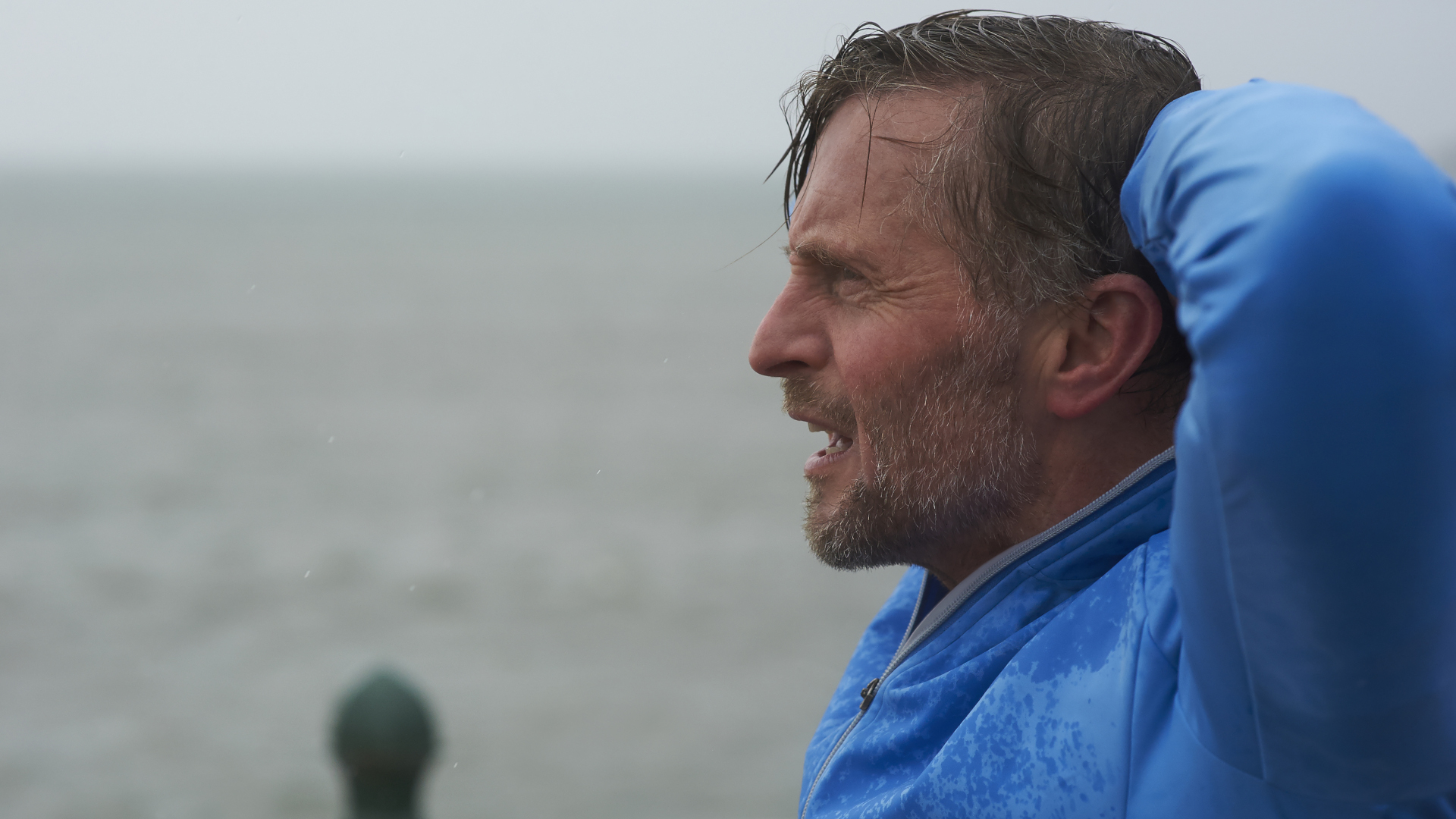
A lightweight waterproof running jacket with hood
If you live somewhere like the Pacific Northwest or the UK where rain is just a way of life, you’ll want to invest in one of the best lightweight running jackets for cooler days. Choose one that is snug fitting with elasticated cuffs and hem, has a high collar and, ideally, a performance-ready hood that is slightly peaked. Basically, you want everything to stay in place when you’re on the go. Generally speaking, you want your jacket to have a streamlined fit, but if you want to fit anything underneath it, like your hydration pack or an armband for your phone, it can’t be too snug.
A peaked cap
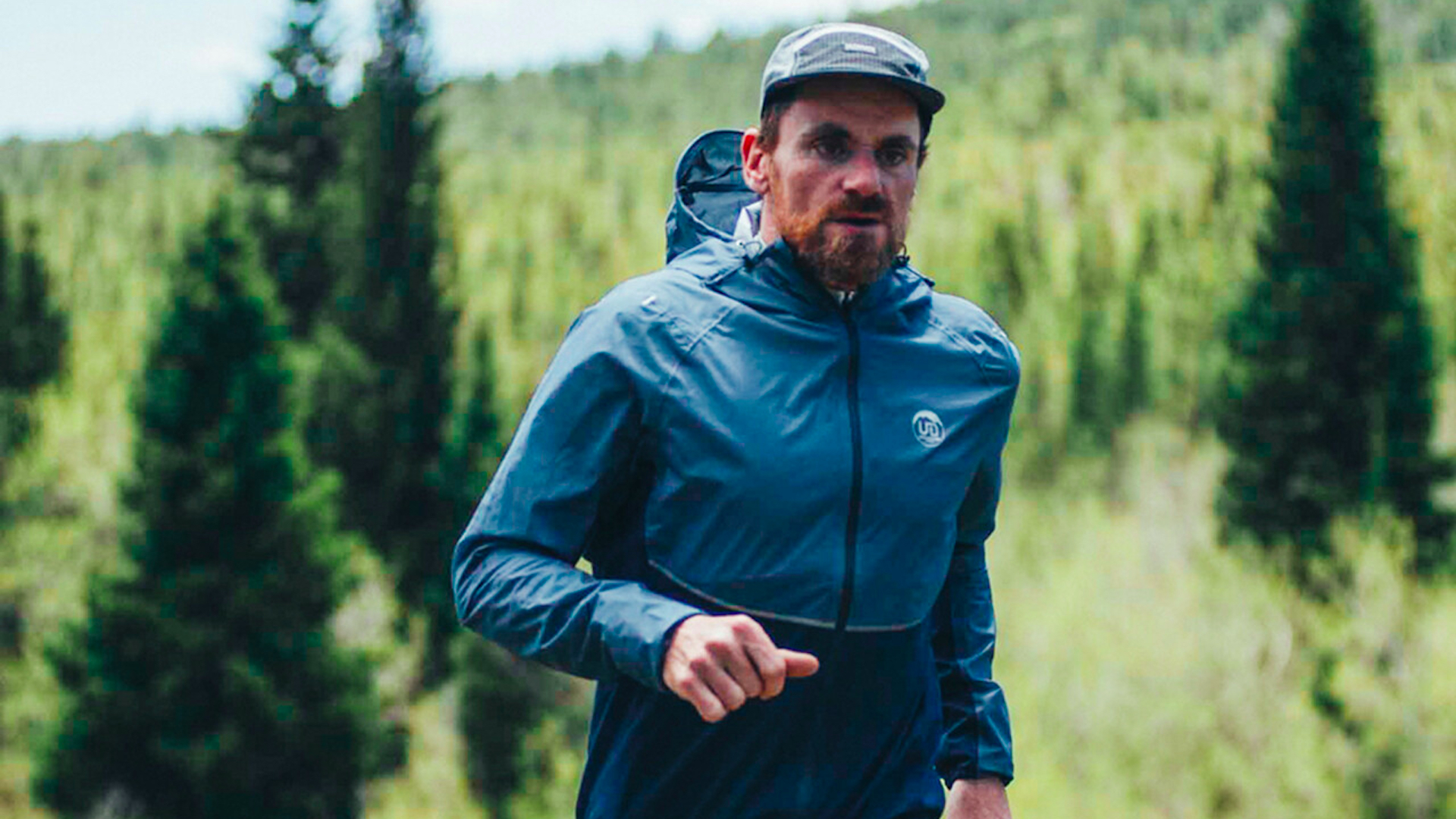
If you find a hood annoying when you’re running, you can get a jacket with no hood, but you’ll probably want a peaked cap to keep the rain out of your eyes. Check out our list of the best running hats to find one that will stay on once you get going.
Our top tips for running in the rain
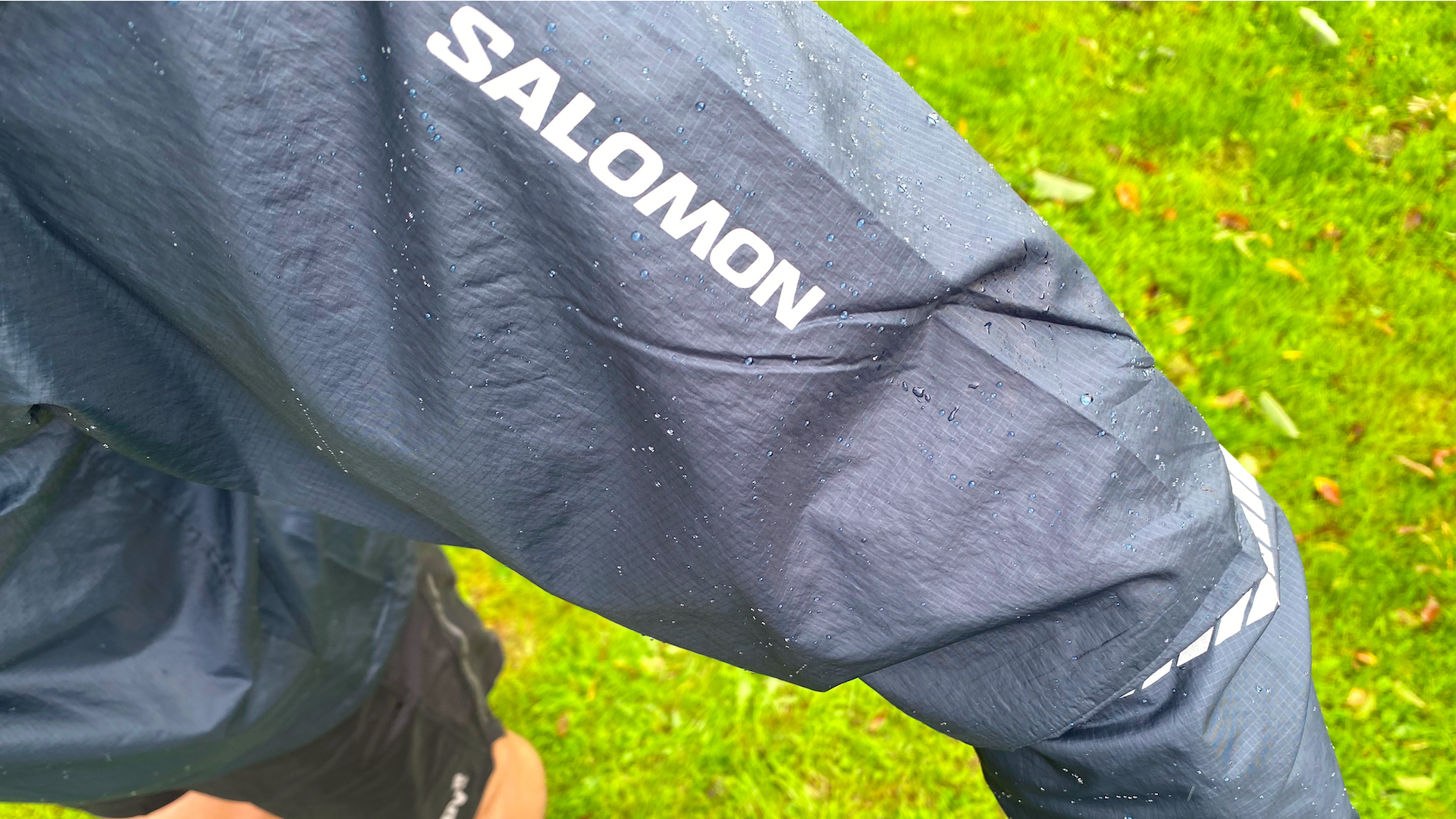
Wear reflective gear: If you’re going to be road running, reflective gear is a good idea since rain makes it difficult for motorists to see you. Pick out shoes, leggings and a running jacket that have reflective details and make yourself as visible as possible.
Be aware of others: Visibility is reduced by rain. Take extra care when crossing roads and try to make eye contact with, and signal at, drivers and cyclists to make sure they're aware of your presence, even if it looks like they're slowing down to let you cross.
Reduce chafing, at all costs: While chafing can occur on sweaty summer runs, it's an absolute menace if left unchecked when running in the rain. Avoid becoming a victim by using anti-chafe gels.
Keep your phone dry: You might be used to just sticking your phone in your pocket when you run, but of course, that’s a no-go when it’s pouring. A good option is to use a hydration pack that has a waterproof pocket for your phone, then you can wear it over your running jacket, however you may also be able to wear it underneath your jacket so everything stays dry.
Running in a thunderstorm is not cool: It's never safe to run in a thunderstorm as there's always the risk of getting struck by lightning or an object near you getting struck and falling on you, such as a tree. If you're out when a thunderstorm occurs, seek indoor shelter as soon as possible.
Remove clothing after your run: It's nice to get warm and dry after a run and the best way to do this is by removing any wet clothing and changing into fresh, dry garments. So cozy!
Can you get sick if you run in the rain?
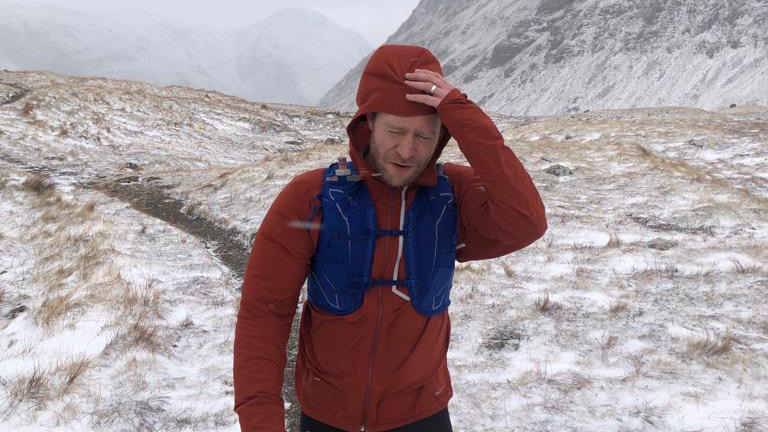
First things first, being wet doesn't make someone sick. If it did, the global swimming pool segment wouldn't be a billion dollar market, would it? Yes, it's something of a myth that being wet directly leads to a cold or the flu.
However, being cold can suppress the immune system, making it easier for viruses to sneak on in and make themselves at home. Wearing wet clothing is a surefire way to make yourself chillier. This is because wet clothing increases heat loss through both evaporation and conduction. If you persist in wearing wet clothing in a cold environment, your body will be working harder to maintain its usual 98.6°F temperature through shivering and increasing blood flow to your core. While it's doing this, its immune system is suppressed slightly. In essence, you've let your guard down to deal with the issue of warming up.
The main danger of being wet in cold conditions is hypothermia, a medical term for a dangerous drop in body temperature that, if untreated, can lead to death. Usually, when running, we produce enough heat for this not to be a concern. However, if injury occurs and you get stuck in remote, wet, cold conditions, it can be a very serious situation. Always carry spare layers in your hydration pack, as well as an emergency blanket.
Julia Clarke is a staff writer for Advnture.com and the author of the book Restorative Yoga for Beginners. She loves to explore mountains on foot, bike, skis and belay and then recover on the the yoga mat. Julia graduated with a degree in journalism in 2004 and spent eight years working as a radio presenter in Kansas City, Vermont, Boston and New York City before discovering the joys of the Rocky Mountains. She then detoured west to Colorado and enjoyed 11 years teaching yoga in Vail before returning to her hometown of Glasgow, Scotland in 2020 to focus on family and writing.

